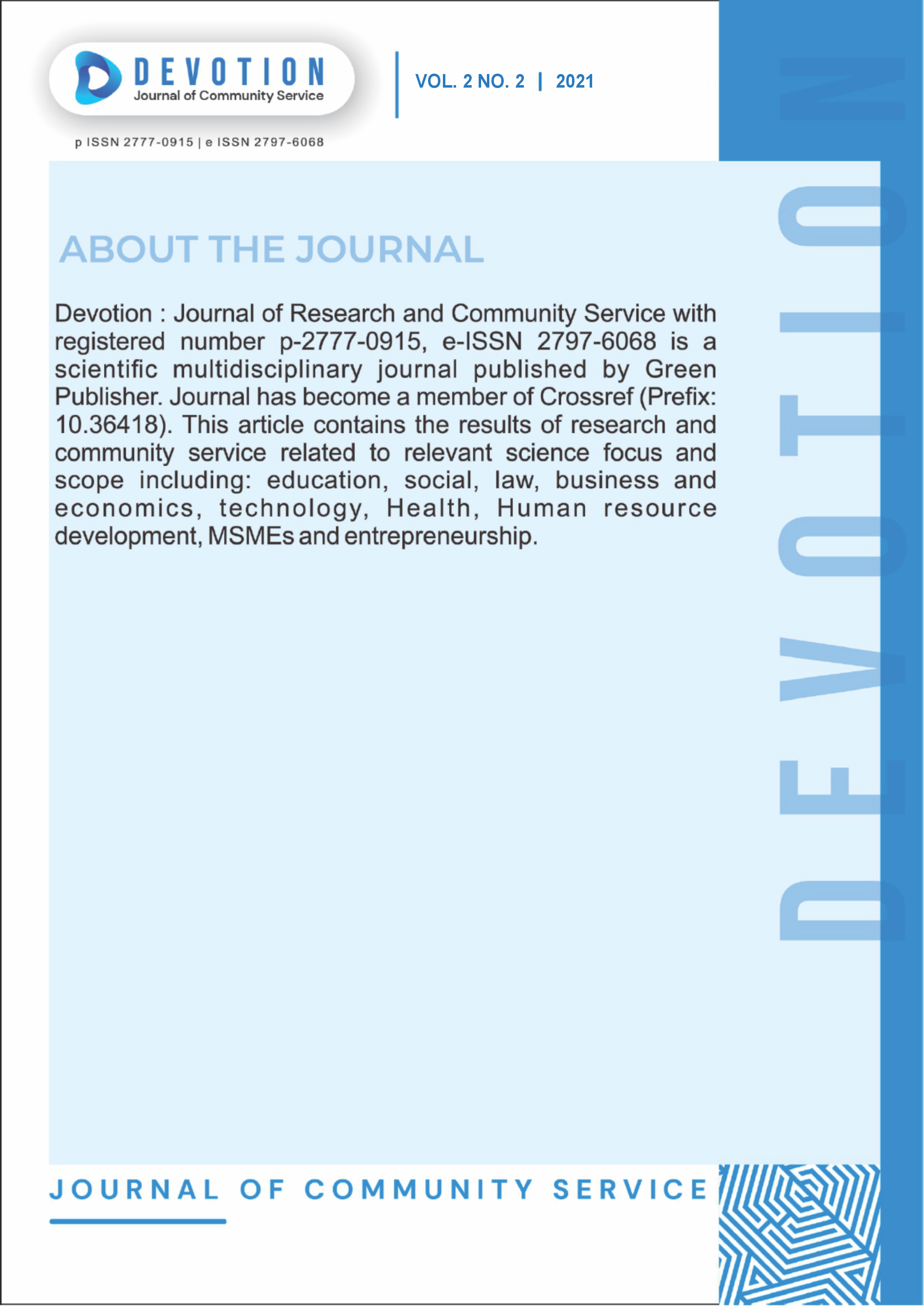Application of the Cantol Roudhoh Method to Improve Student's Reading Ability in RA Siti Fatimah
DOI:
https://doi.org/10.36418/dev.v2i2.80Keywords:
Learning Method, Cantol Roudhoh,, Learning,Abstract
The application of learning to read cantol roudhoh is one of the learning techniques that can improve children's language skills. This technique is very suitable for early childhood learning. The results of research conducted at RA Siti Fatimah, Harjamukti Village, Cirebon City, showed that the objective conditions of language learning were studied from the teacher's perspective, positive responses of children, teaching and learning processes, and supporting facilities, using the cantol roudhoh method which was applied in developing aspects of language, and skills children's language that can develop as expected. The implementation of this raudhoh hook method in its application process at RA Siti Fatimah is to practice in class A, which is to introduce hooks from her friends in clothes to her friends, Zahra, after reaching the target of her friends, Zahra continues on package B, which is entering the introduction of vocal groups (a, i, u, e, o), after that they enter the ng (cat) group, then enter the Koran group (nga, ngi, ngu, nge, ngo) and mosquitoes (nya, nyi, nyu, nye, nyo ). The last stage is the introduction of hooks with consonants.
Published
Issue
Section
License
Copyright (c) 2021 Muhammad Fahmi

This work is licensed under a Creative Commons Attribution-ShareAlike 4.0 International License.
Authors who publish with this journal agree to the following terms:
- Authors retain copyright and grant the journal right of first publication with the work simultaneously licensed under a Creative Commons Attribution-ShareAlike 4.0 International. that allows others to share the work with an acknowledgement of the work's authorship and initial publication in this journal.
- Authors are able to enter into separate, additional contractual arrangements for the non-exclusive distribution of the journal's published version of the work (e.g., post it to an institutional repository or publish it in a book), with an acknowledgement of its initial publication in this journal.
- Authors are permitted and encouraged to post their work online (e.g., in institutional repositories or on their website) prior to and during the submission process, as it can lead to productive exchanges, as well as earlier and greater citation of published work.













